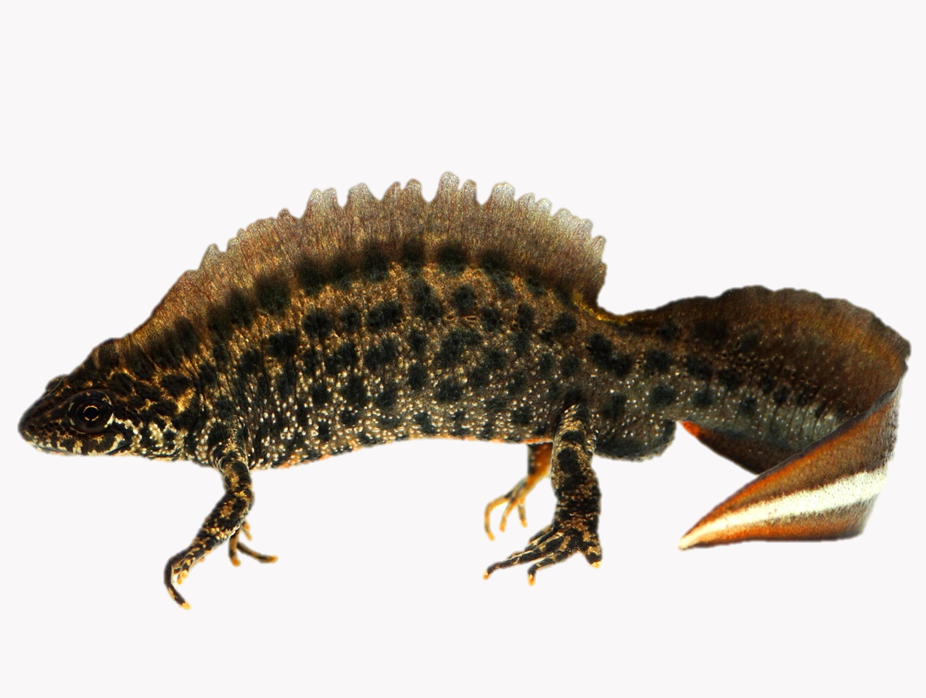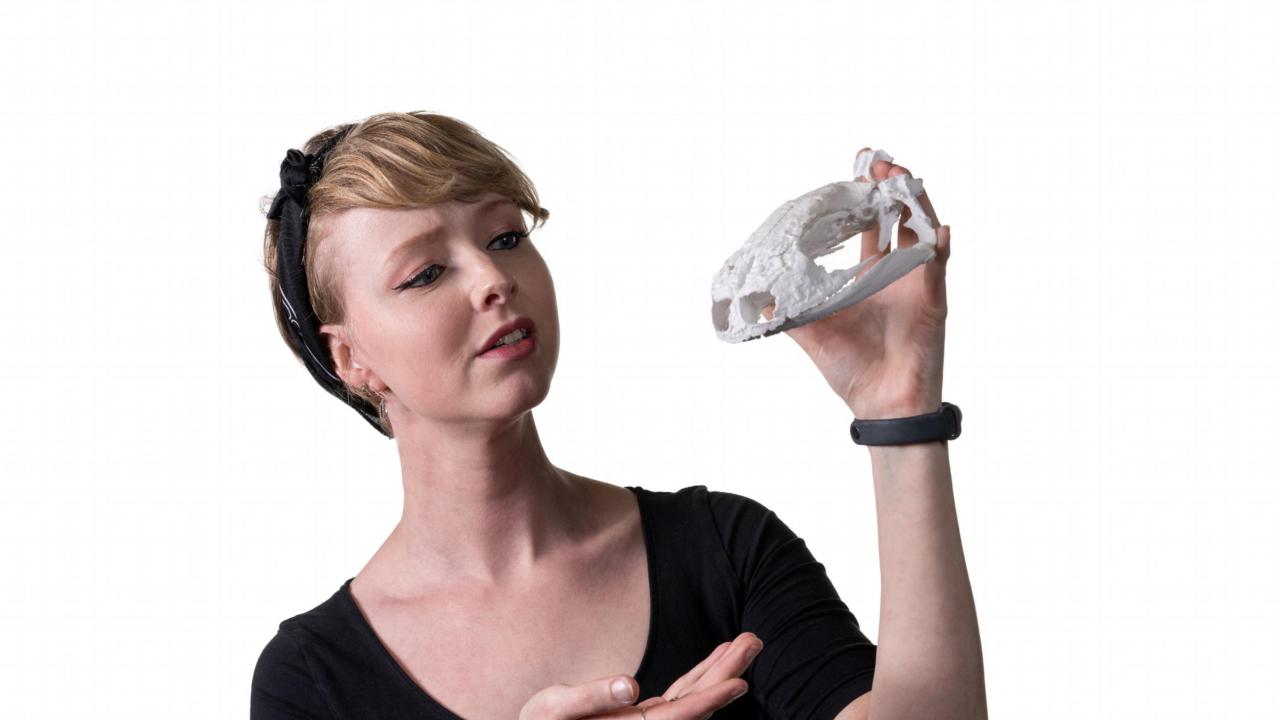I am fascinated by the evolutionary and ecological mechanisms that shape the natural world. Most specifically by what happens when species become threatened, or populations become isolated. As a geneticist I love diving into the DNA code of, primarily, animals. So I can figure out how everything works exactly, in order to help understand and protect our natural environment better. This is why - next to conducting research projects - I am interested in nature conservation, biodiversity monitoring and scienc communication.
Keywords
Evolution, ecology, conservation, genetics, genomics, inbreeding, mutations, evo-devo, embryology, amphibians, invasive species, exotic species, science communication, scicomm, behavioral change, biodiversity monitoring, DNA, zoology, animals
BalancedLethal Systems
 During my PhD and postdoctoral projects I worked at the Wielstra lab (ERC Starting Grant-funded research). Together with my coworkers I studied the genomics underlying the best-known case of a balanced lethal system: chromosome 1 syndrome in Triturus newts. Balanced lethal systems are considered an evolutionary failure, because natural selection is unable to get rid of the associated recessive, lethal alleles. I investigate the lethality and evolutionary origin of this system in collaboration with IBL. Are you curious to find out more? Just click here to read about balanced lethal systems!
During my PhD and postdoctoral projects I worked at the Wielstra lab (ERC Starting Grant-funded research). Together with my coworkers I studied the genomics underlying the best-known case of a balanced lethal system: chromosome 1 syndrome in Triturus newts. Balanced lethal systems are considered an evolutionary failure, because natural selection is unable to get rid of the associated recessive, lethal alleles. I investigate the lethality and evolutionary origin of this system in collaboration with IBL. Are you curious to find out more? Just click here to read about balanced lethal systems!
ScienceCommunication
What is it like to work as a scientist in the field of genomics, for Naturalis as well as for other organizations? And what do I actually learn from the salamanders and the other animals that I study? I find it important to share my knowledge and experiences with the world - and I love to 'use' DNA as an example and starting point to explain my thoughts on nature whenever I am on stage or in the media!
Manon's evolution lesson at 'Natuurlab' (in Dutch only)
>> Hoe werkt evolutie Les 2: een dodelijk raadsel
DNA talks on YouTube (two of more episodes)
>> Manon's DNA talk 5: DNA barcoding of amphibians
>> Manon's DNA talk 8: Banded newts are like oil and water
More videos (a selection)
>> Universiteit van Nederland ('University of the Netherlands') video 2025
>> Biologist Manon de Visser about mangabeys
>> Animal DNA and salamander mysteries
>> Royal Netherlands Academy of Arts and Sciences (KNAW) video Award 2023
Manon in traditional media items (a selection, in Dutch)
>> Éénvandaag personal interview 2025
>> NPO Radio 2 about odd sounds and behaviors of animals 2024
>> Standing up for 'unpopular' animals at the NOS Jeugdjournaal 2024
>> Keuringsdienst Van Waarde KRO-NCRV 'Frogslegs research!' 2023
Blogs!
>> Working with supercomputers
>> Personal blog (with the most recent news items!)

Keypublications
Awards & Prizes:
- Appointed as 'Week van de Biologie 2024' ambassador, by NIBI (the Dutch Institute for Biology)
- Selected as 'Face of Science 2023' by the Royal Netherlands Academy of Arts and Sciences (KNAW), The Youth Academy (De Jonge Akademie) and NEMO Kennislink, after being nominated by Associate Professor and marine biologist Dr Lisa Becking.
- "1st prize for one-minute pitch" at the Netherlands Society of Evolutionary Biology PhD & Postdoc meeting 2021 (NLSEB2021), for the pitch: "The balanced lethal system in Triturus: an evolutionary trap!"
- "3rd best oral presentation" at the Programming For Evolutionary Biology Conference 2021 (miniPEB2021), Freie Universität Berlin, for the talk: "Studying the lethality and evolutionary origin of the balanced lethal system in Triturus newts".
- "1st prize for oral presentation" within subtheme: Global Health - Humans and Animals" at the University of Copenhagen EuroLeague of Life Sciences (ELLS) Student Conference 2017, for the MSc project "The Importance of Genomics for the Conservation Management of the Critically Endangered Pygmy Hog (Porcula salvania)".
- "Best oral presentation" at the Benelux International Society of Applied Ethology (ISAE) meeting 2016, for the MSc project "The effect of exposure to visitors on stress in the critically endangered blue-eyed black lemur (Eulemur flavifrons) and other primate species at Apenheul Primate Park, the Netherlands."
Scientific publications:
- De Visser, M.C., France, J., McCartney-Melstad, E., Bucciarelli, G.,M., Theodoropoulos, A., Shaffer, H.B., Wielstra, B. (2024) NewtCap: an efficient target capture approach to boost genomic studies in Salamandridae (True Salamanders and Newts) Ecology and Evolution 15(8), e71835.
- Meilink, W.R.M., Cvijanović, M., De Visser, M.C., France, J., Ivanović, A., Theodoropoulos, A., Vučić, T., Wielstra, B. (2025). Exposing selection and genetic linkage in the evolutionary enigmatic balanced lethal system in Triturus newts. Ecology and Evolution 15(6), e71591.
- De Visser*, M.C., Meilink*, W.R.M., Theodoropoulos, A., Fahrbach, M., Wielstra, B. (2025) Determining zygosity with multiplex Kompetitive Allele-Specific PCR (mxKASP) genotyping. Ecology and Evolution 15(6), e71642.
- Koster, S., Polanen, R., Avcı, A., Bogaerts, S., Bozkurt, E., Goudarzi, F., Hemami, M.-R., Olgun, K., Pasmans, F., Steinfartz, S., Üzüm, N., De Visser, M.C., France, J., Theodoropoulos, A., Wielstra, B. (2025). Discordance between phylogenomic methods in Near Eastern mountain newts (Neurergus, Salamandridae). Molecular Phylogenetics and Evolution 211, 108386.
- Mars, J., Koster, S., Babik, W., France, J., Kalaentzis, K., Kazilas, C., Martínez-Solano, I., De Visser, M.C., Wielstra, B. (2025). Phylogenomics yields new systematic and taxonomical insights for Lissotriton newts, a genus with a strong legacy of introgressive hybridization. Molecular Phylogenetics and Evolution 204: 108282
- Kalaentzis, K., Kazilas, C., Arntzen, J.W., Bogaerts, S., Franzen, M., Litvinchuk, S.N., Olgun, K., France, J., De Visser, M.C., Wielstra, B. (2025). Phylogenomics resolves the puzzling phylogeny of banded newts (genus Ommatotriton). Molecular Phylogenetics and Evolution 203: 108237.
- De Visser, M., France, J., Paulouskaya, O., Brown, T., Fahrbach, M., Van der Ploeg, C., Wielstra, B. (2024) Conserved gene content and unique phylogenetic history characterize the 'bloopergene' underlying Triturus' balanced lethal system, bioRxiv preprint 2024.10. 25.620277.
- France, J., De Visser, M., Paulouskaya, O., Arntzen, J.W., Babik, W., Cvijanović., M., Ivanović, A., Smith, J., Vučić, T., Wielstra, B. (2024) Genomic evidence suggests the balanced lethal system in Triturus newts originated in an instantaneous speciation event, bioRxiv preprint 2024.10. 29.620207.
- De Visser, M., Van der Ploeg, C., Cvijanović, M., Vučić, T., Theodoropoulos, A., Wielstra, B. (2024) PAV-spotter: using signal cross-correlations to identify Presence/Absence Variation in target capture data, bioRxiv preprint 2024.10. 25.620064.
- Kazilas, C., Dufresnes, C., France, J., Kalaentzis, K., Martínez-Solano, I., De Visser, M.C., Anrtzen, J.W., Wielstra, B. (2024) Spatial genetic structure in European marbled newts revealed with target enrichment by sequence capture, Molecular Phylogenetics and Evolution 194: 108043.
- Kalaentzis K., Arntzen J.W., Aziz A., Van den Berg V., Beukema W., France J.M., Olgun K., Van Riemsdijk I., Üzüm N., De Visser M.C. & Wielstra B.M. (2023) Hybrid zone analysis confirms cryptic species of banded newt and does not support competitive displacement since secondary contact, Ecology and Evolution 13(9): e10442.
- Robbemont J., Van Veldhuijzen S., ..., De Visser M.C. & Wielstra B.M. (2023) An extended mtDNA phylogeography for the alpine newt illuminates the provenance of introduced populations, Amphibia-Reptilia 44(3): 347-361.
- Kuijt, M., Oskam, L., Den Boer, I., Dufresnes, C., France, J., Gilbert, M. J., De Visser, M.C., Struijk, R.P.J.H, Wielstra, B. (2023) The introduction of three cryptic tree frog species in the Dutch coastal dunes challenges conservation paradigms. Amphibia-Reptilia 44(1), 1-10.
- Koster, S., Prins, N., Dufresnes, C., France, J., De Visser, M.C., Struijk, R.P.J.H., Wielstra, B. (2023) The conservation paradox of an introduced population of a threatened species: spadefoot toads in the coastal dunes of the Netherlands. Amphibia-Reptilia 44(1), 11-18.
- De Brouwer, J., Helder, B., France, J., De Visser, M.C., Struijk, R.P.J.H., Wielstra, B. (2023) An isolated crested newt population in Dutch coastal dunes: distribution relict or introduction? Amphibia-Reptilia 44(1), 19-26.
- Vliegenthart, C., Van de Vrede, M., Den Boer, I., Gilbert, M., Lemmers, P., France, J., De Visser, M.C., Struijk, R.P.J.H., Wielstra, B. (2023) The limits of mtDNA barcoding for determining the provenance of invasive species: a midwife toad example. Amphibia-Reptilia 44(1), 27-33.
- Van der Groot, A., De Visser, M., Hiemstra, A.F. (2022) Smooth newts Lissotriton vulgaris observed hibernating in a waterfowl nest. Herpetological Bulletin: 162: 41-42.
- De Visser M., Prins E., Bosse M., Crooijmans R., Ter Meulen T. (2022). Maximum longevity and juvenile mortality in zoo-housed mangabeys. Zoo biology: 1-11.
- Fahrbach M., De Visser M.C., Wielstra B.M. The hybrid zone between the Italian and Northern crested newts (Triturus carnifex and T. cristatus) reaches Germany, Salamandra 57(3): 428-434.
- De Visser M.C., Liu, L., Bosse, M. (2021). Pygmy hogs, Current Biology 31(8):R366-R368.
- Liu, L., Bosse, M., Megens, H.J., De Visser, M.C., Groenen, M.A.M., Madsen, O. (2020) "Genetic consequences of long‐term small effective population size in the critically endangered pygmy hog." Evolutionary Applications 14:710-720.
- Van Tuijl, C., Van Bochove, K., De Visser, M.C. (2019). Genetic Structure of Badger Populations in a Fragmented Landscape: How Do Barriers Affect Populations on a Genetic Level? Lutra 62: 65-76.
* = Authors share a first authorship / equal contribution.
Popular Science Articles:
- Wielstra, B.M., De Visser, M.C., Stark, T., Struijk, R.P.J.H. (2023) Herkomst van exotische Alpenwatersalamanders blootgelegd, Schubben & Slijm 15(3).
- Struijk, R.P.J.H., Prins, N., Koster, S., Putters, N., Jansen, N., Esselaar, J., De Visser, M.C., France, J.M., Wielstra, B.M. (2024) Knoflookpad in Callantsoog: verspreiding, voortplanting en geografische herkomst, RAVON 26(1): 2-5.
- De Visser, M.C., Prins, N., France, J.M., Struijk, R., Wielstra, B. (2023) Exotische amfibieën in de duinen ontmaskerd met mtDNA barcoding. Holland's Duinen 82(1): 25-29.
- Wielstra, B.M., Den Boer, I., France, J.M., De Visser, M.C., Struijk, R. (2023) MtDNA barcoding van exotische amfibieën in de duinen. RAVON 89(2): 26-29.
- Struijk, R.P.J.H., Backx, B., Demirkapu, B., De Visser, M., Wielstra, B. (2022). 'Rise and fall' van een populatie westelijke smaragdhagedissen in Scheveningen. RAVON 24(4): 24-27.
- Helder B., De Brouwer J., Ouwehand J., De Visser M. & Wielstra B. (2021). Koi-kamsalamander, Schubben & Slijm (48): 8.
- Meilink W.R.M., France J., De Visser M. C. & Wielstra B. (2021). Balanced Lethal Systems: An Evolutionary Mystery. Frontiers For Young Minds. 9:632945.
- De Visser M.C., France J.M., Meilink W.R.M. & Wielstra B.M. (2021). Een evolutionair raadsel: het dodelijke chromosoom 1 syndroom in Triturus-salamanders, RAVON 23(1): 9-12.
- Struijk R.P.J.H, Demirkapu B., De Visser M.C. & Wielstra B.M. (2021). Exotische smaragdhagedissen in de duinen bij Scheveningen, Kijk op Exoten (34): 12-13.